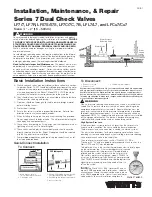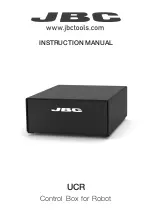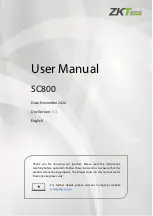
NAV IP Access controller
46
or
multiple
alarm
outputs.
Alarm
components,
configuration
basics,
and
menu
settings
are
introduced
below.
5.9.1
Components
for
Alarm
NAV
Controller
consists
of
two
basic
components:
one
main
module
and
one
door
module.
Users
can
additionally
install
three
more
door
modules
and
one
alarm
module.
These
three
types
of
modules
are
all
equipped
with
alarm
function.
The
main
module
has
2
alarm
inputs
and
2
alarm
outputs,
called
Main
Alarm
Output
and
Auxiliary
Alarm
Output
respectively.
Each
door
module
has
2
alarm
outputs,
which
usually
react
to
alarm
events
on
the
corresponding
door.
However,
it
can
be
set
to
react
to
other
alarm
events
as
well.
Alarm
outputs
on
the
door
module
can
connect
up
to
5A
external
alarm
devices.
The
alarm
module
has
8
alarm
inputs
and
8
alarm
outputs.
8
alarm
inputs
can
connect
to
external
alarm
input
devices,
such
as
PIR
motion
sensor,
glass
sensor
and
etc.
8
alarm
outputs
can
connect
up
to
2A
external
alarm
devices.
The
above
mentioned
are
physical
devices
providing
alarm
functions
User
can
freely
define
the
allocation
of
any
input
to
any
output.
The
following
section
outlines
basic
concepts
for
events,
alarm
and
configuration.
5.9.2
Alarm
Configuration
Basics
NAV
Controller
keeps
track
of
all
events
in
the
access
control
system,
either
legal
or
illegal,
either
normal
or
abnormal.
For
example,
access
granted,
access
denied
and
so
on.
Some
events
are
critical
which
must
trigger
the
alarm
output,
like
the
firm
alarm
input,
the
zone
alarm
input
and
etc.
But
some
events
are
not
that
important
to
trigger
the
alarm
output,
like
the
denied
access
due
to
the
invalid
time.
These
settings
all
depend
on
the
users’
requirements.
NAV
Controller
collects
all
events
that
might
trigger
the
alarm
output
and
provides
the
full
capacity
to
enable
or
disable
the
alarm
output
on
these
events.
Sometimes
user
wants
to
allocate
a
particular
event
to
a
particular
alarm
output,
or
allocate
alarm
inputs
in
certain
area
to
multiple
alarm
outputs.
NAV
Controller
delivers
all
the
function
and
flexibility
user
need.
User
can
define
whether
certain
event
will
trigger
an
alarm,
and
can
further
specify
to
which
alarm
output
that
event
is
allocated.
All
events
that
might
trigger
an
alarm
are
listed
below:
Alarm
input
0~9,
unknown
card,
expired
card,
invalid
card,
invalid
door,
invalid
time,
card
anti
‐
pass
back
fail,
card
PIN
fail,
SYS
PIN
fail,
ARM
PIN
fail,
door
forced
open,
door
held
open,
reader
lost,
and
remote
alarm.
All
these
events
can
be
allocated
to
any
alarm
relay
output
on
main
module,
door
module,
and
alarm
module.
The
detailed
configuration
method
is
introduced
in
the
following
section.
5.9.3
Enter
Alarm
Setting
Menu
Under
System
menu,
press
four
times
to
bring
up
the
following
window:
Summary of Contents for EFC302
Page 85: ...NAV IP Access controller 76 Figure 7 19Other Record ...
Page 159: ......
















































